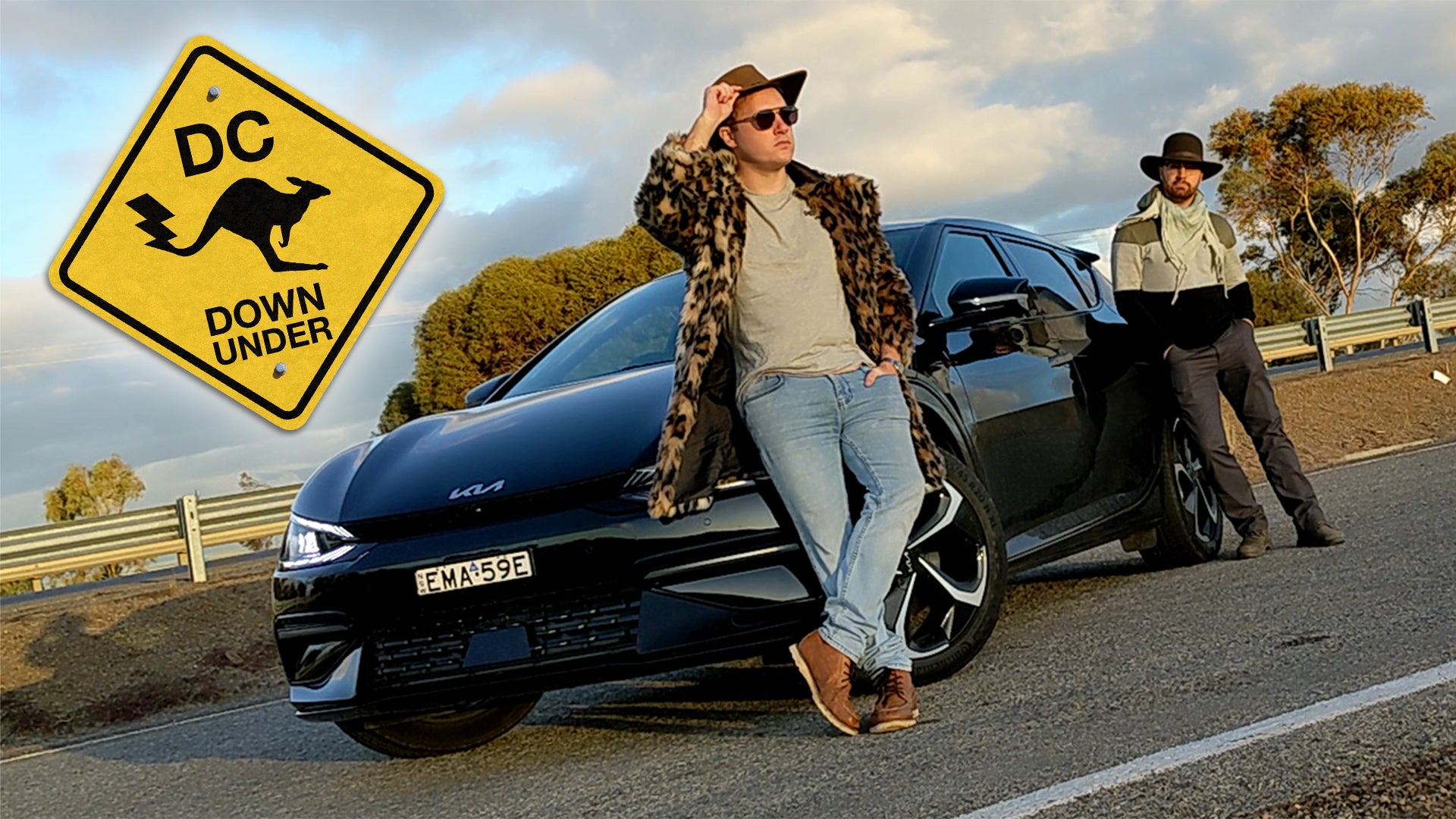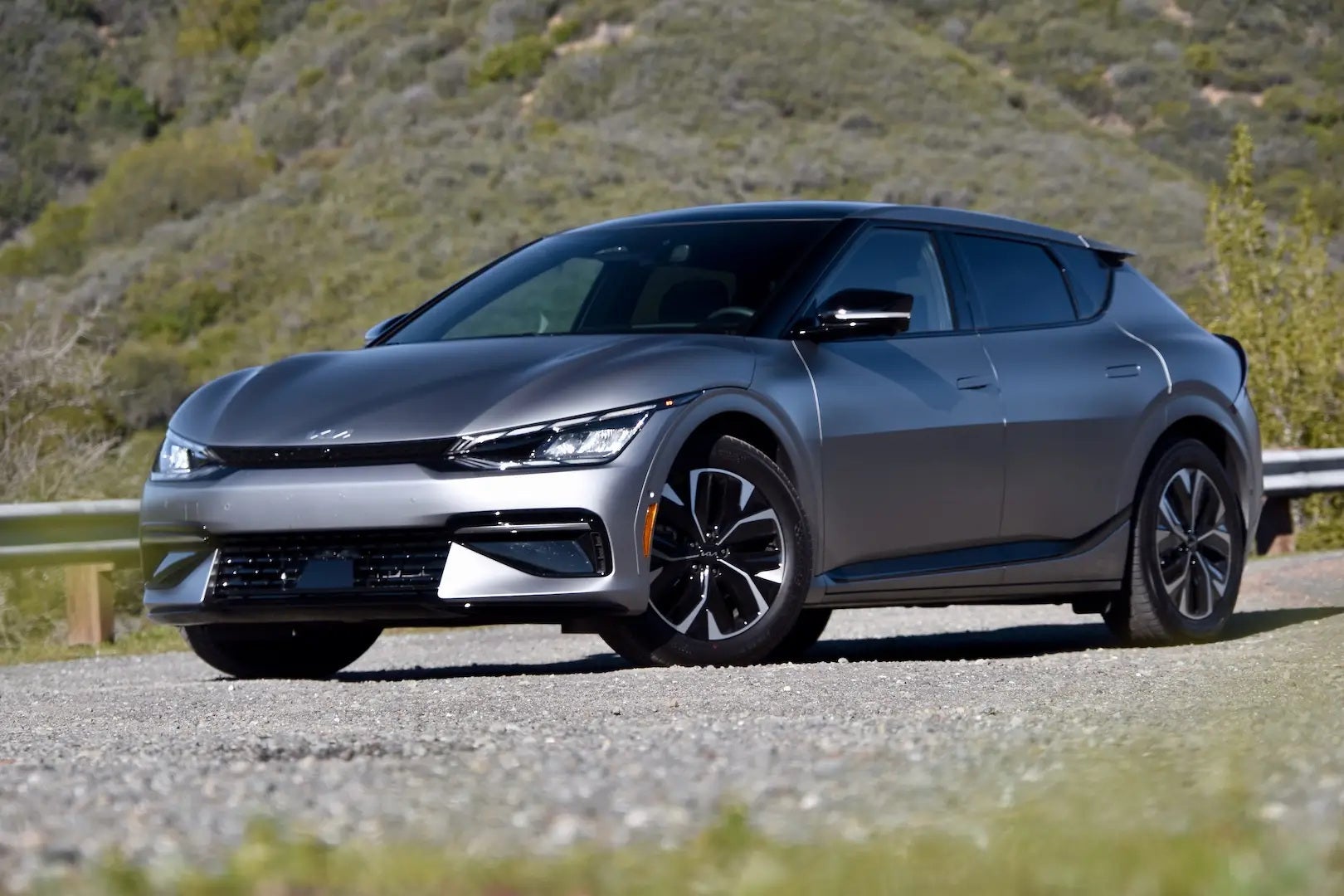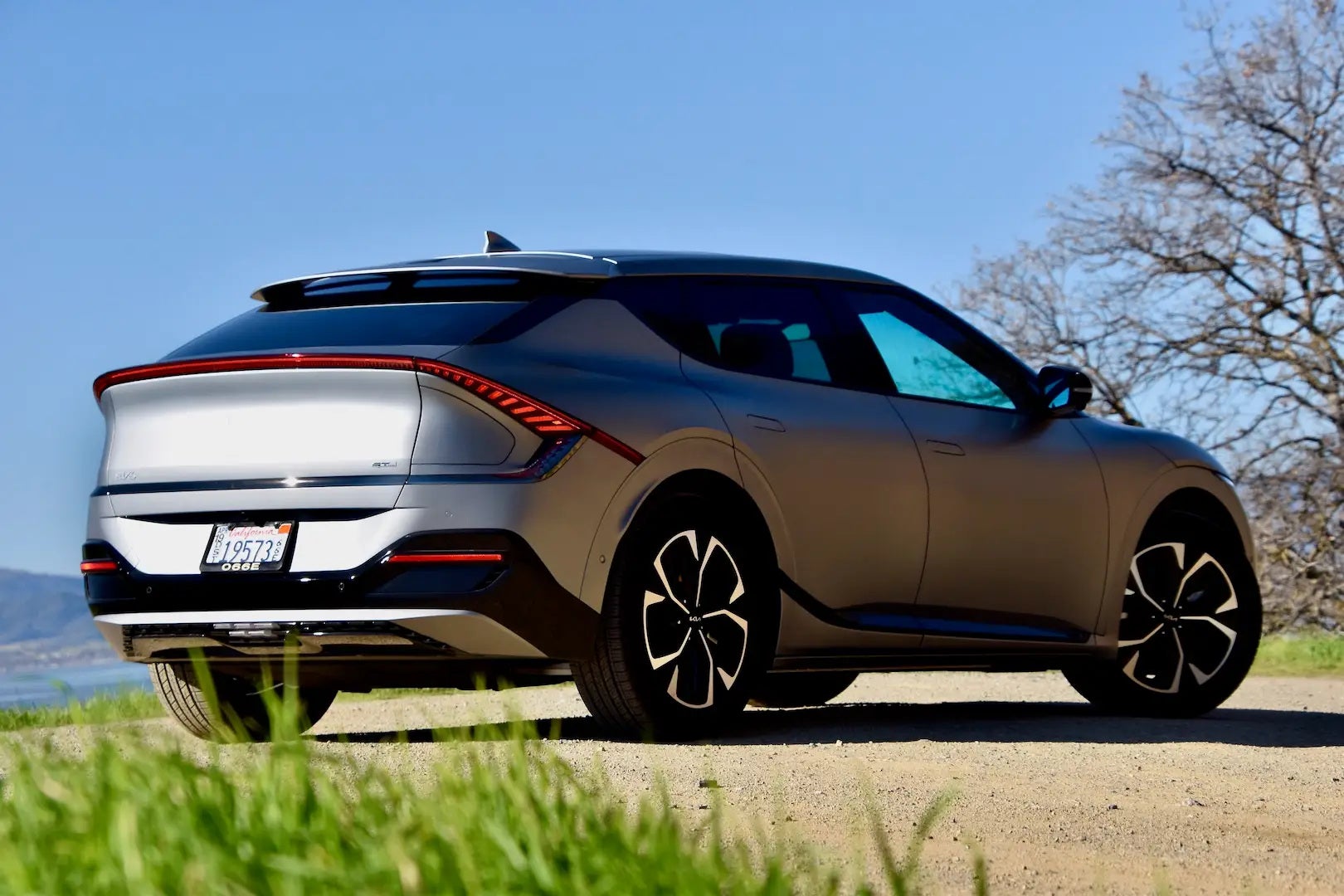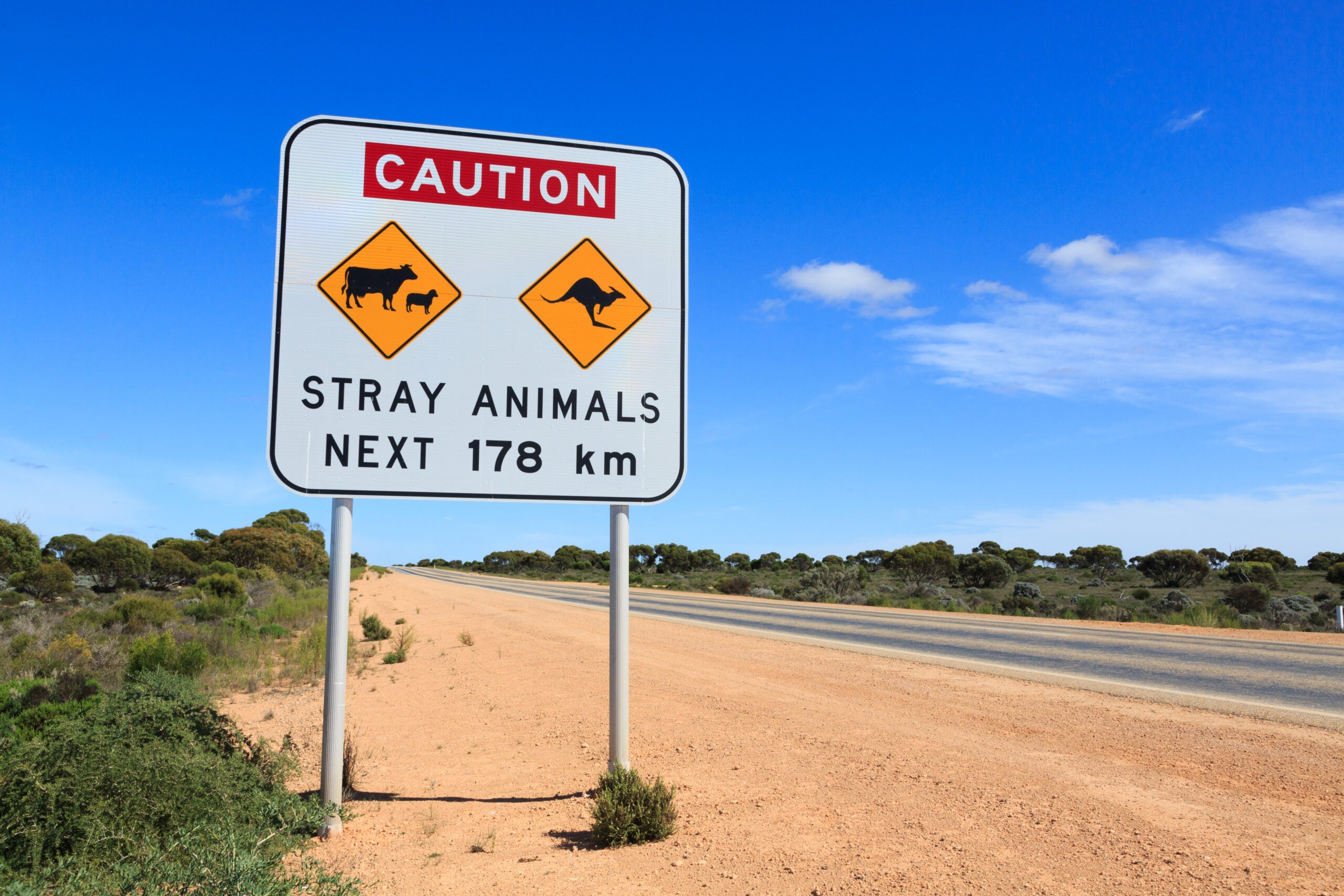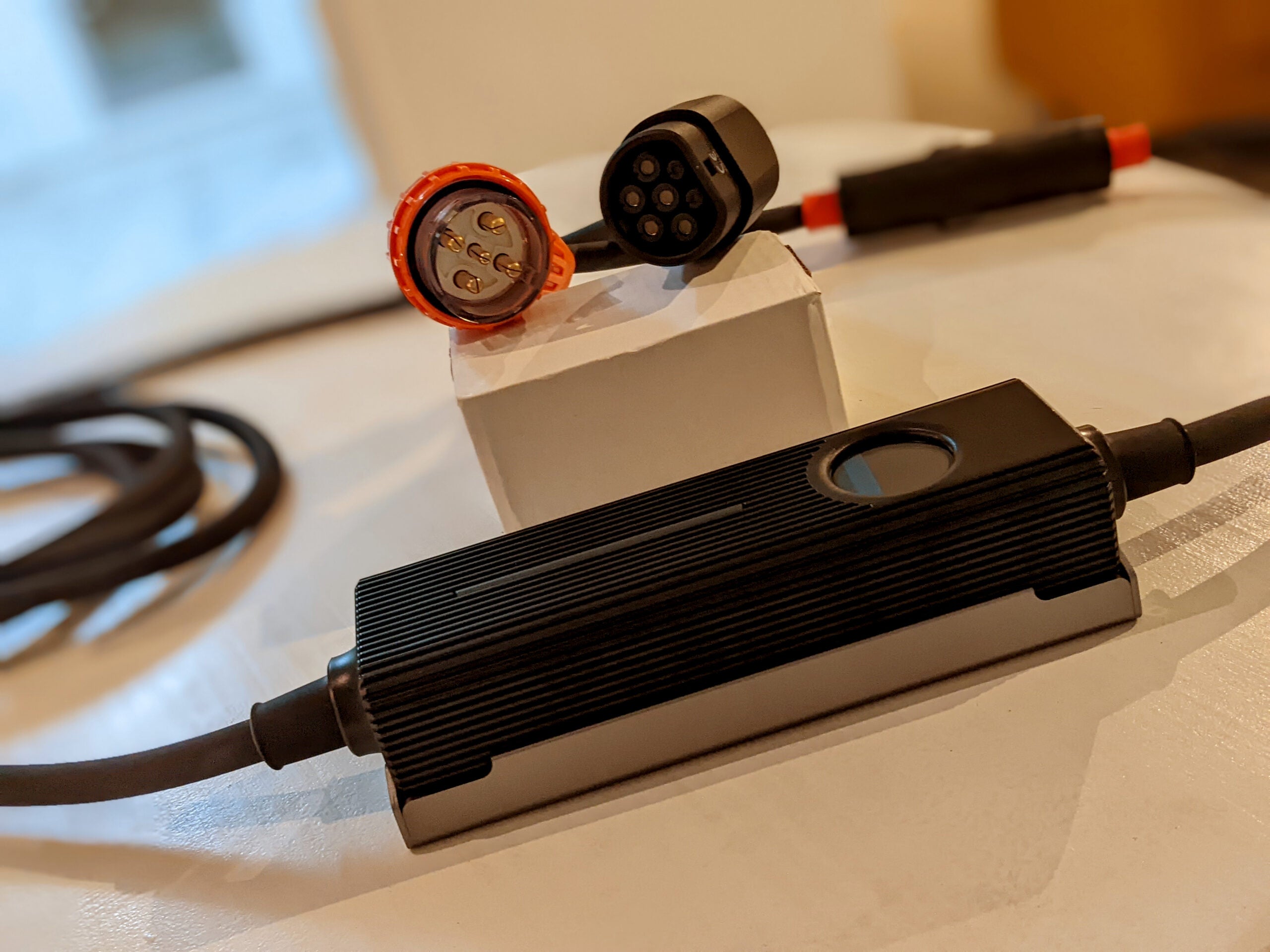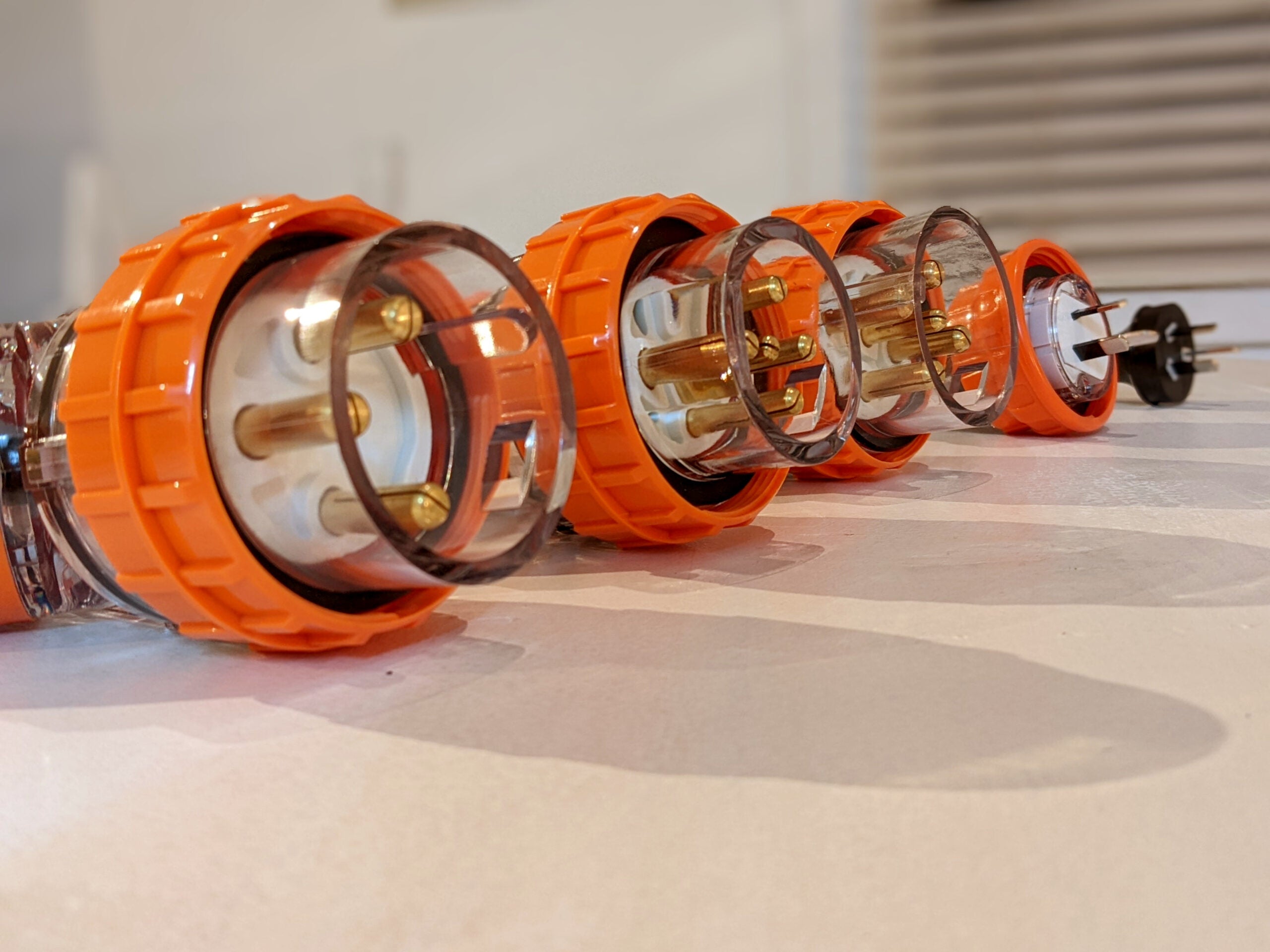Anyone can drive an EV where there are public chargers aplenty. That much everyone already knows. That’s why we’re setting out on a grand adventure, pushing an EV far beyond the city limits and deep into the Australian Outback.
Yes, The Drive is headed Down Under. Our erudite staff writer, James Gilboy, will be joining me in this great southern land. Together, we’ll pilot a 2022 Kia EV6 from Adelaide, South Australia, to Perth, Western Australia. Our journey will take us 1,700 miles across desolate, brown lands where there’s barely any infrastructure at all, let alone EV chargers.
Kia EV6 GT-Line. James Gilboy
We’ll make the journey across five days, limited by infrastructure on the one hand, and the desert on the other. The creatures that populate this desolate land tend to roam around at night, making driving after sundown foolhardy at best, and downright dangerous at worst. Instead, we’ll keep our travel to the daylight hours and using the nighttime to charge.
[Welcome to project DC Down Under, where The Drive is sending the indomitable Lewin Day and James Gilboy across 1,700 miles of the Australian Outback over the span of five days in a Kia EV6. Electric cars in 2022 thrive in places where there's a healthy number of public chargers; doing so across the Nullarbor Plain is another matter altogether. Follow along with Lewin and James' journey on our Twitter and Instagram accounts with the hashtag #DCDownUnder and watch this space for updates. This is the first story in the series.]
The Kia EV6 is a vehicle well-suited to the task. We’ll be driving the GT-Line AWD model featuring dual motors good for 320 horsepower. More importantly, though, it’s got a healthy 300 miles of range from its 77.4-kWh battery. Those long legs are key to helping us cross the vast distances between towns along the way.
We’ll be crossing the Nullabor Plain, so named for its near-total lack of trees. Along the way, we’ll be hooking up to power sockets at caravan parks, motels, and football ovals in order to sup enough electrons to keep our batteries full. Getting across the Nullabor in an EV requires knowing who to call for a top-up, with open outlets few and far between.
The 90 Mile Straight is just one of the attractions along our route. Getty Images
Naysayers continue to deride EVs as impractical, citing limited range and slow recharge times. Critics will rant about how they’re only useful for city dwellers or those with tiny commutes.
This journey aims to challenge that dogma. We’ll be traveling far from any city; heck, we’ll be starting and finishing in state capitals you’ve probably never heard of. We don’t want to see how practical an EV is in the suburbs, no. We want to see how hard it is to punt one along some of the most remote roads in the world.
James and I will be filing reports from the field, tallying the day’s efforts, and chronicling our successes and failures. We’ll be coming to you on Instagram throughout the week, dispatching pictures and videos from the road via our capable social team back home. Following our successful arrival in Perth, we’ll be filing our diaries of the journey right here on The Drive.
By design, none of our charging stops should take more than about eight hours to fully charge the battery. We might catch a few hours of shuteye beyond that, but that’s very much a writer’s prerogative. At a couple of fast chargers, it should be as quick as an hour or so to top off the cells and get back on the road.
Much of the Nullarbor Plain is unfenced, making wildlife a hazard to road users. Driving at night is heavily discouraged. Getty Images
We’ve carefully planned our itinerary, but it won’t take much to throw a spanner in the works. One dodgy connector or a three-phase socket out of service, and we’ll be out of luck. If we get stuck charging off a regular AC outlet, it could take us in excess of 24 hours to get a full charge to make it to our next destination.
That’s frustrating enough in isolation, but there are flow-on issues, too. Such delays will necessitate rebooking any following accommodation, a task made all the harder by the lack of mobile signal along most of the route. If we mess up really bad, James will miss his flight back to the United States, and he’ll have to start a new life in Australia. I’m not sure he’s ready to do that.
We’re not intending to race by any means, but we have a schedule and we do need to stick to it. It’s going to mean there are late nights and early starts, and we’re probably going to miss the breakfast buffet more often than not. When you need to log over 500 miles in a day, plus charging time, you need to start off bright and early. Or, dark and early, actually; that’s how early we’re talking.
Left: The KWIK Portable charger is capable of running off single-phase and three-phase AC power, delivering up to 16.5 kW. Right: The adaptable tails of the EVSE.com.au charger will allow us to source power from virtually every type of socket in Australia. Lewin Day
We’re taking along some hardware to help, though. EVSE.com.au has graciously provided us with its most versatile unit for the trip: The KWIK Portable 16.5-kW charger. It comes with adaptable tails that will let us hook up to just about any single-phase or three-phase outlet in the country. This is key to allowing us to charge at some of the odder spots along the trip, like football ovals and motel laundries.
We’ll also be taking along a satellite phone for communication in the event we get stranded along the route. We’ll rely on sporadic access to the 4G mobile broadband network to check in with The Drive HQ and file content from the road. WiFi at various stops along the route may be available, but in most cases, it will be going through the cell network anyway.
A satellite phone is a useful piece of emergency equipment when you're deep in the Outback. Plus, it comes in a wonderfully cute Pelican case to boot! Lewin Day
Other supplies will include plenty of snacks, 10 gallons of water, and a full-size spare tire. When towns are hundreds of miles apart, you don’t want to rely on a space-saver donut to get you there.
The journey will show us the realities of long-distance EV road trips. Things could go smoothly, and we might enjoy kicking back while our car collects electrons. Alternatively, we might be days late and dollars short because a couple of broken chargers screwed up the whole trip.
The only way to find out is to go, and that’s precisely what we intend to do.
Lewin “Kangalectric” Day
Next chapter
Got a tip? Email [email protected]
